
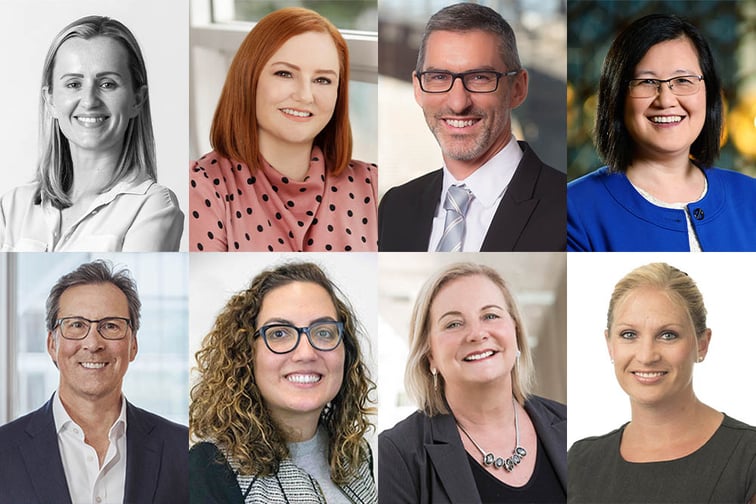
For many years, insurance workplaces have failed to reflect the reality of the world outside them. Insurance professionals would step onto the street at midday to be surrounded by a rich diversity of individuals and select lunch from any number of international cuisines, only to return to an office that was largely white, mono-cultural and male.
But this is slowly changing. Take gender diversity, where things are starting to shift globally. According to Swiss Re, the number of women at the C-suite level in insurance is up from 10% in 2010 to 17% in 2019. Leading Australian insurers are increasingly placing diversity – in all its forms – front and centre of their business strategies. Many are keen participants in the annual Dive In Festival, an invaluable industry forum for building a more diverse and inclusive future. Several organisations are also launching Reconciliation Action Plans to support the national reconciliation movement with Aboriginal and Torres Strait Islander peoples.
It’s no wonder insurance is getting serious about D&I. Research suggests that having a strong D&I program isn’t just the right thing to do; it’s also good for business. In its latest study of more than 1,000 large companies, McKinsey found that those with executive teams in the top quartile for ethnic and racial diversity were 36% more likely to have above-average financial returns, while those in the top quartile for gender diversity were 30% more likely to have above-average returns.
As for cultural diversity, it simply makes sense in a country where, according to the Australian Bureau of Statistics, nearly 49% of Australians were born overseas, over 300 languages are spoken at home and more than 300 ancestries are identified with. As a country, Australia is all the richer for this multitude of outlooks, identities, religions, ethnicities, cultures, backgrounds and experiences. And as an industry, insurance is increasingly tapping into this diversity and all the benefits it brings.
At Brooklyn Underwriting, increasing the diversity of the team has been a major focal point as the organisation has grown and expanded its operations over the past few years.
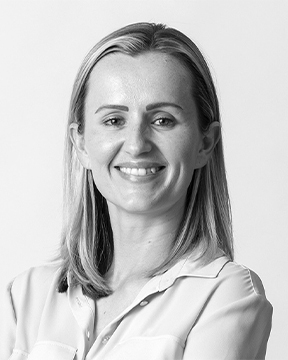 “We are so proud of the widely diverse and inclusive team we have put together,” says Brooklyn marketing and business support executive Elizabeth Pace. “Speaking namely to the topic of gender balance, over 65% of our team are women. This group is made up of wide-ranging cultural backgrounds, as well as working mothers, carers, pregnant women and some on maternity leave.”
“We are so proud of the widely diverse and inclusive team we have put together,” says Brooklyn marketing and business support executive Elizabeth Pace. “Speaking namely to the topic of gender balance, over 65% of our team are women. This group is made up of wide-ranging cultural backgrounds, as well as working mothers, carers, pregnant women and some on maternity leave.”
Brooklyn is part of AXA XL, and Pace says the increase in the ratio of female to male employees was heavily influenced by polices the insurer has implemented regarding inter-view processes. For every available role, the company must interview an equal number of women and men.
“It’s as simple as that – a genuine approach to a fair and balanced recruitment process for everybody,” Pace says. “We believe organisations that go out of their way to attract and leverage the diversity of the talent market are the ones that will ultimately win the war for talent and be more successful in achieving business goals. Diverse perspectives lead to better performance, so it must be a consideration in all of our hiring decisions.
“We must tap into the full talent pool, both external and internal, if we’re going to attract and retain the best and the brightest.
To support this goal, we expect that our leaders will always consider a highly qualified, diverse candidate slate prior to making a hiring decision.”
Pace says Brooklyn believes the Australian insurance sector is at a crossroads and can no longer afford to keep doing things the way they’ve always been done.
“If we’re not only going to survive into the future but thrive, we have to radically rethink our approach to talent acquisition and retention,” she says. “This requires being future-focused about the skills and experience we need moving forward. The bottom line is that we are no longer just competing with other insurance companies for the best candidate; we’re competing across all industries, so we need to transform the way we attract potential employees.
“Driving authentic change in our industry is an ongoing effort. We can’t simply pledge on social media once a year, claiming we support diversity and inclusion; it’s time to walk the talk.”
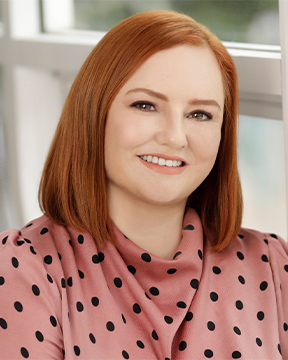 CHU believes that a diverse and inclusive world is better for its team, its customers and its community – and that it also makes good business sense, says CEO Kimberley Jonsson.
CHU believes that a diverse and inclusive world is better for its team, its customers and its community – and that it also makes good business sense, says CEO Kimberley Jonsson.
“The events of 2020 around the world have certainly highlighted this,” she says. “Political unrest has arisen from groups of people feeling excluded. Creating a world of inclusion can only serve to bring people together, with better outcomes for all.”
Jonsson points to studies showing that diverse workplaces are ahead in terms of employee engagement, innovation, customer satisfaction and financial performance. CHU has made diversity and inclusion one of the three pillars in its 2020–25 business strategy.
“An inclusive workplace enables us to provide a superior customer experience, vali-dated by our NPS; generate greater levels of innovation; and achieve higher levels of productivity,” Jonsson says. “The insurance industry is certainly moving in the right direction in terms of diversity, but we need to make sure we see it right through to the inclusion part.”
In 2020, CHU launched a flexible working model and a series of D&I initiatives for its team, community and customers that were heavily focused on inclusion.
For the team, these included:
For intermediaries and direct customers, initiatives included:
CHU has also taken a range of steps for the wider community, including:
“People need to feel respected, connected and to feel included in an organisation – all of which helps keep the company culture alive,” Jonsson says.
In its D&I efforts, Steadfast Insurance Group has been true to its name. Last July, the organisation set up a Diversity and Inclusion Committee, which marked the latest step in its steady and resolute progress toward a more representative workplace. For the past five years, Steadfast has participated in the global Dive In Festival, and within the organisation, a number of D&I initiatives were quietly bubbling away.
However, what was missing was wider participation and greater visibility of these efforts. The committee – made up of people from all levels and across all business units within Steadfast – represents the next step in formalising the group’s commitment to D&I.
“We do have a diverse workforce in terms of country of origin, gender, geography and sexual orientation,” says Peter Roberts, 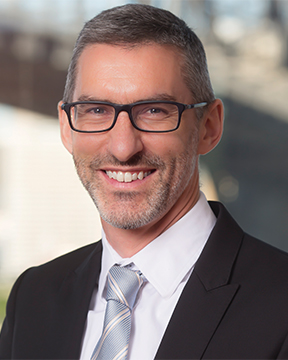 Steadfast’s executive general manager for business solutions and chair of the D&I Committee. “But the committee is about saying, ‘Where are we at? Can we do better? And let’s give it a more centralised focus’.”
Steadfast’s executive general manager for business solutions and chair of the D&I Committee. “But the committee is about saying, ‘Where are we at? Can we do better? And let’s give it a more centralised focus’.”
Perhaps the biggest challenge for the new committee was where to direct its energy, so employees were given the chance to weigh in on Steadfast’s initiatives to date and where they thought further efforts should be concentrated. An employee survey identified three areas of focus.
• Gender: increasing the representation and visibility of women in leadership roles
• LGBTIQ+: increasing the visibility and number of LGBTIQ+ role models and raising awareness of key barriers and issues faced
• Disability: promoting greater understanding of barriers faced by employees with disabilities
“We needed to do a deeper dive into any issues identified, so we ran focus groups,” Roberts says. “Out of those, we formed a strategy which cascades from our vision down to the key focus areas, right down to tangible actions. We are setting a baseline of metrics to see, next time we survey, whether our metrics are improving.”
The focus groups offered clear insights into what employees wanted D&I to look like. “For example, the feedback from a women-only session was, ‘We don’t want gender targets, as we don’t want it to be a token thing. What we’d like is designated mentoring programs’,” Roberts says. “So now we are implementing one.”
Other points raised in the focus groups have informed training (including a session outlining how to take an inclusive approach to running meetings), as well as areas like succession planning and unconscious bias. The aim is for D&I to be embedded in the business, rather than simply being a box-ticking exercise.
Steadfast also has an Indigenous engagement ambassador, David Liddiard, who has spent the past 30 years working to close the education, health and wellbeing, and employment gaps between Indigenous and non-Indigenous Australians. And last year, Steadfast launched its first Reconciliation Action Plan, forming a RAP Committee to explore ways to establish long-term relationships with First Nations peoples and contribute to reconciliation.
With an industry-leading, gender-equal, flexible paid parental leave scheme and a third consecutive Gold Employer Award in the Australian Workplace Equality Index, QBE Australia has solidified its status as a driver of diversity and inclusion within the insurance industry.
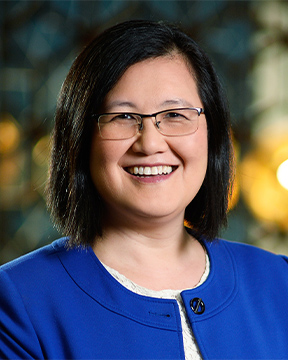 While the industry’s focus on gender equality and other well-known elements of diversity is critical, Ming Long, non-executive director of QBE’s Australia Pacific board, says class is an important factor that hasn’t yet been focused on but should be.
While the industry’s focus on gender equality and other well-known elements of diversity is critical, Ming Long, non-executive director of QBE’s Australia Pacific board, says class is an important factor that hasn’t yet been focused on but should be.
“When you think about who is in the lowest classes, you can think of it from a socioeconomic perspective – for example, vulnerable people with lower education or poorer backgrounds,” Long says. “Not all, but some of these people fi t within this class category, so if we can get more of these people in our industry, the ripple effects could be significant.
“It’s important to not just look after our vulnerable customers, but to have them be fundamental in our approaches. What this means is that instead of people without these experiences crafting policies and procedures they think work for vulnerable people, we instead have vulnerable people, as employees, creating solutions that actually work because they’re built on lived experience and empathy.”
Long says the responsibility for this lies with leaders, who must make sure their biases don’t become hurdles.
“Leaders are the ones who can, and should, be refining policies and demonstrating inclusive behaviours and actions so there aren’t hurdles to vulnerable people entering the industry,” she says. “We also need to minimise hurdles to enter leadership positions, because what happens when we have a one-dimensional view of leadership is that it excludes everyone else who is even slightly different.
“If you don’t get different perspectives and lived experiences in leadership, then you’re crafting a post-COVID world that only suits the same people it used to suit. It’s these lived experiences that could enrich the solutions we come up with post-COVID, and when we embrace these, our industry will be more successful as a result.”
So how can the industry address any voids in diversity?
“Businesses should be cultivating and engaging teams with different backgrounds and experiences – they’re a wealth of knowledge from different walks of life,” Long says. “By not only giving them a voice, but amplifying it, we could help create more valuable, practical customer solutions. The business case for inclusivity is only getting stronger, and I believe our industry is ready to take on its next challenge.”
For Zurich Australia & New Zealand, diversity and inclusiveness are not separate from day-to-day operations, but rather a key component in how the company builds pride, confidence and resilience within its teams.
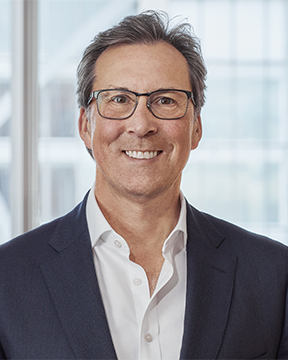 “Diversity also means embracing the different perspectives our people bring and capitalising on the value of these different views and opinions,” says Tim Plant, Zurich’s general insurance CEO for Australia and New Zealand.
“Diversity also means embracing the different perspectives our people bring and capitalising on the value of these different views and opinions,” says Tim Plant, Zurich’s general insurance CEO for Australia and New Zealand.
To pursue and cement its D&I values and goals, Zurich looks both within its own ranks and externally to find strength in partnerships. Gender equality, with a focus on pay, has been one area of success. Biannual pay equivalency analysis has allowed the organisation to identify – and act on – any discriminatory gender-based pay practices.
“We have achieved some great outcomes to ensure gender equality,” Plant says. “These include the success of our female sponsorship program, which creates a fantastic leadership pipeline within our business; the launch of our new Family Care Policy; and our ongoing work in this space being recognised by the Economic Dividends for Gender Equality [EDGE], elevating us to MOVE status in June. I’m proud of what we have been able to achieve, and I look forward to continuing our active support of gender equality initiatives.”
Zurich’s female sponsorship program, launched last year, aims to develop, connect and profile future female leaders. Each participant is matched with a senior leader within the organisation who can advocate for them and connect them with networks and potential career-advancing opportunities. Participants also benefit from ongoing individual and group learning interventions.
The program is already reaping rewards. Of the 2020 cohort of nine women, five have been promoted or moved into a broader role within a 12-month period. Several countries within the global organisation are now looking to adopt the program.
Gender equality is just one of three core pillars of Zurich’s D&I strategy. The second is flexwork, which encompasses everything from the physical workplace to ensuring policies and process support remote working.
“Some changes that the pandemic made necessary – in particular, remote work – create an opportunity to reimagine how work gets done, resetting norms and building diversity and inclusion into the new reality of work,” Plant says.
The third core pillar of Zurich’s D&I strategy is an inclusive culture, which extends to policy review and design, reviewing processes for bias, providing guidelines for employees and managers, and professional development opportunities.
Under this pillar, Zurich Australia replaced its old parental leave policy with a new Family Care Policy that honours the reality that ‘family’ means different things to different people. Now every employee – regardless of gender, gender identity or sexual orientation – can take paid leave as they welcome new family members or tackle family care issues. A key component of the new policy is the intro-duction of superannuation contributions on unpaid leave for primary caregiving parents.
COVID-19 has forced dramatic change for the team at Innovation Group (IG).
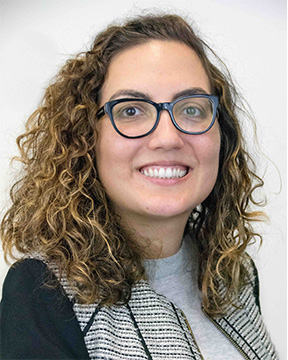 “It has fast-tracked strategic initiatives to support our employees and clients and taught lessons around the true agility and trust we can embed in our workforce,” says Alicia Ameduri, IG’s head of people experience. “We will not be alone in this regard. The experience instilled over the past year has created a depth of connection in our business.
“It has fast-tracked strategic initiatives to support our employees and clients and taught lessons around the true agility and trust we can embed in our workforce,” says Alicia Ameduri, IG’s head of people experience. “We will not be alone in this regard. The experience instilled over the past year has created a depth of connection in our business.
“As we moved to a virtual world, we have never felt more united. Bit by bit, we have overcome traditional attitudes to work environments and embraced our new normal.”
While IG has made many changes to adapt to this new world, there has been none more powerful for the business than its focus on inclusivity, Ameduri says. At IG, inclusivity has meant creating a safe space for employees to be themselves at work.
“We believe it is our differences that bring us together and that authenticity is the best tool to nurture the post-COVID workforce,” Ameduri says.
To celebrate the uniqueness of its employees, IG established a social hub called Innovation People, which allows employees to celebrate events, hobbies and initiatives that resonate. “Cultural days and fun activities such as cooking classes with family allowed us to learn more about each other,” Ameduri says.
The organisation’s employee experience platform, IGConnect, provided the team access to continuously updated information and tools to support physical health, mental health and healthy eating.
“As our network has evolved, so has our hub, focusing on differences in interests, such as IG Eats, IGrow,” Ameduri says. “Creation of the IG Kids Club allowed us to bring our IG kids into the team as honorary members. Our IG kids love our all-hands meetings to say hello and join in the excitement when we announce competition winners.”
IG has also launched an initiative to support flexible working. “We trust our employees to find the balance to work where, when and how they feel best fi ts for them,” Ameduri says. “We established Work My Way Flex, initially focused on location of work but progressively increasing to time of work, span of hours and choice of location. We want our employees to work where they work best, as we feel this best supports inclusivity.
“We look forward to continuing our journey in this new normal and our path to an inclusive workforce that our clients and employees can feel proud of.”
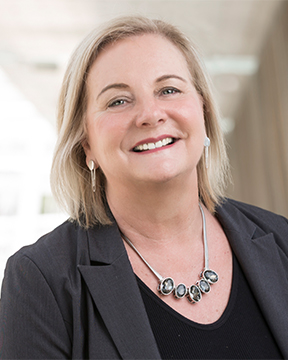 NTI has a long-held affinity with diversity in the traditional sense: gender, age, experience and culture, says chief people and operations officer Kerrie Challenor. However, the transport and logistics specialist insurer is seeking new ways to bring diversity to the table, recognising that it’s diversity of thought that’s proven most valuable to NTI’s corporate culture and for sparking innovation.
NTI has a long-held affinity with diversity in the traditional sense: gender, age, experience and culture, says chief people and operations officer Kerrie Challenor. However, the transport and logistics specialist insurer is seeking new ways to bring diversity to the table, recognising that it’s diversity of thought that’s proven most valuable to NTI’s corporate culture and for sparking innovation.
“Put simply, the more diverse our thought pool is on an initiative, the greater the output,” Challenor says. “Diversity is at the core of every project team at NTI, be it experience or area of expertise. Challenging ideas or processes leads to stronger outcomes.”
With this in mind, NTI is doing exciting work with graduates to develop new talent, says Sue O’Brien, NTI’s head of people and capability.
“Recently we’ve undertaken an experimental approach of what it means to ‘grow’ an underwriter,” she says. “We encourage our graduates to push the boundaries and challenge our status quo.”
Historically, discussion around diversity in insurance has largely been gender-focused. Because gender balance is also a key issue in the transport and logistics industry, NTI does due diligence when it comes to gender equity.
“We review all roles for equity annually,” O’Brien says. “We aim for a balanced candidate selection pool at recruitment and use independent psychometric assessment to minimise bias.”
Those efforts have resulted in 60% of employees being under female executive leadership, accounting for two of the company’s biggest technical and specialist portfolios. However, the support goes beyond the executive level – NTI is equally focused on supporting diversity in other ways, such as recognising what caretaker roles look like in today’s society.
“Our priority is happy, healthy people who feel valued at work and supported at home – however that may look,” O’Brien says. “We do this through a range of leave entitlements and lifestyle benefits. This includes NTI’s generous parental leave scheme and other leave options for primary carers and a subsequent offering for secondary.
“The support doesn’t just stop when parental leave ends,” she adds. “While traditionally in insurance you would see a higher turnover post-parental leave, our program, coupled with flexible working arrangements, sees a 100% return-to-work rate following parental leave.”
COVID-19 presented NTI with the opportunity to adopt an even more generous flexible work arrangement, Challenor adds.
“Working through COVID restrictions reinforced our corporate values – that we trust each other to imagine, exceed and thrive,” she says. “We’ve since expanded our flexible working arrangement by giving people the choice to work remotely for 50% of their work fortnight. The offering has been well received across the board, but it’s particularly helpful for those with family commitments or other responsibilities.”
While NTI has done much work on diversity thus far, the workplace is ever-changing – and if there’s one thing the company is comfortable with, it’s change, Challenor says.
“I’m excited to think about the future diversity initiatives we are developing and their positive impact to our people,” she says.
AT AIG, diversity, equity and inclusion (DE&I) is a business imperative. The organisation’s mission is to create an environment where people of all cultures, backgrounds and perspectives are valued and to ensure the company attracts, inspires, develops and retains diverse talent. AIG recognises that the diversity of its workforce is one of its greatest assets, linked to benefits such as increased employee and customer retention and engagement, business performance, innovation, and profitability.
A key component of AIG’s DE&I agenda is its network of 130-plus employee resource groups (ERGs) across 35 countries, which are designed to bring colleagues together through shared interests across different dimensions of diversity.
In 2014, AIG launched the Women & Allies ERG in Australia with the objective of increasing the number of women in leadership positions. Over time, the ERG has adapted to meet the changing needs of employees and has been rebranded as The Equality Network, with a mission to unite employees with a common understanding of the importance of a gender-equal and equal-opportunity organisation.
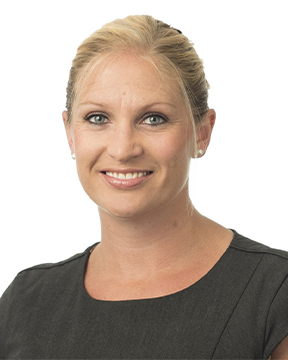 “The Equality Network is at the heart of our employee engagement strategy and continues to ensure that AIG colleagues are aware of the benefits of fostering a culture that celebrates diversity, equity and inclusion,” says Sharon-Louise Reid, head of HR for AIG Australia.
“The Equality Network is at the heart of our employee engagement strategy and continues to ensure that AIG colleagues are aware of the benefits of fostering a culture that celebrates diversity, equity and inclusion,” says Sharon-Louise Reid, head of HR for AIG Australia.
In Australia, The Equality Network has delivered numerous initiatives for employees and the industry alike, with the goal of creating real change around diversity in insurance. Notable outcomes include sponsoring several United Nations Women campaigns, hosting health and wellbeing sessions in partnership with the All Blacks and female Black Ferns Sevens teams, participating in Pride marches, and supporting industry events such as Women in Insurance and the global Dive In Festival.
Now in its fifth year of participating in Dive In, AIG continues to facilitate important DE&I conversations for the insurance industry. Past events have focused on attracting young professionals to the industry, measuring the impact of diversity and establishing what a culturally competent workplace looks like.
Recognising that gender inclusion works both ways, AIG has also recently launched gender-inclusive parental leave, giving both male and female employees equal entitlements. This, combined with the introduction of a Women Leaders Development Program and updated language in all internal HR and corporate policies, has led to a 16% improvement in AIG Australia’s employee engagement score over the past 18 months, as well as a finalist nomination for the ANZIIF Excellence in Workplace Diversity & Inclusion Award.
“These accomplishments demonstrate the importance of creating a sense of belonging and being able to bring our whole selves to the workplace,” Reid says.
